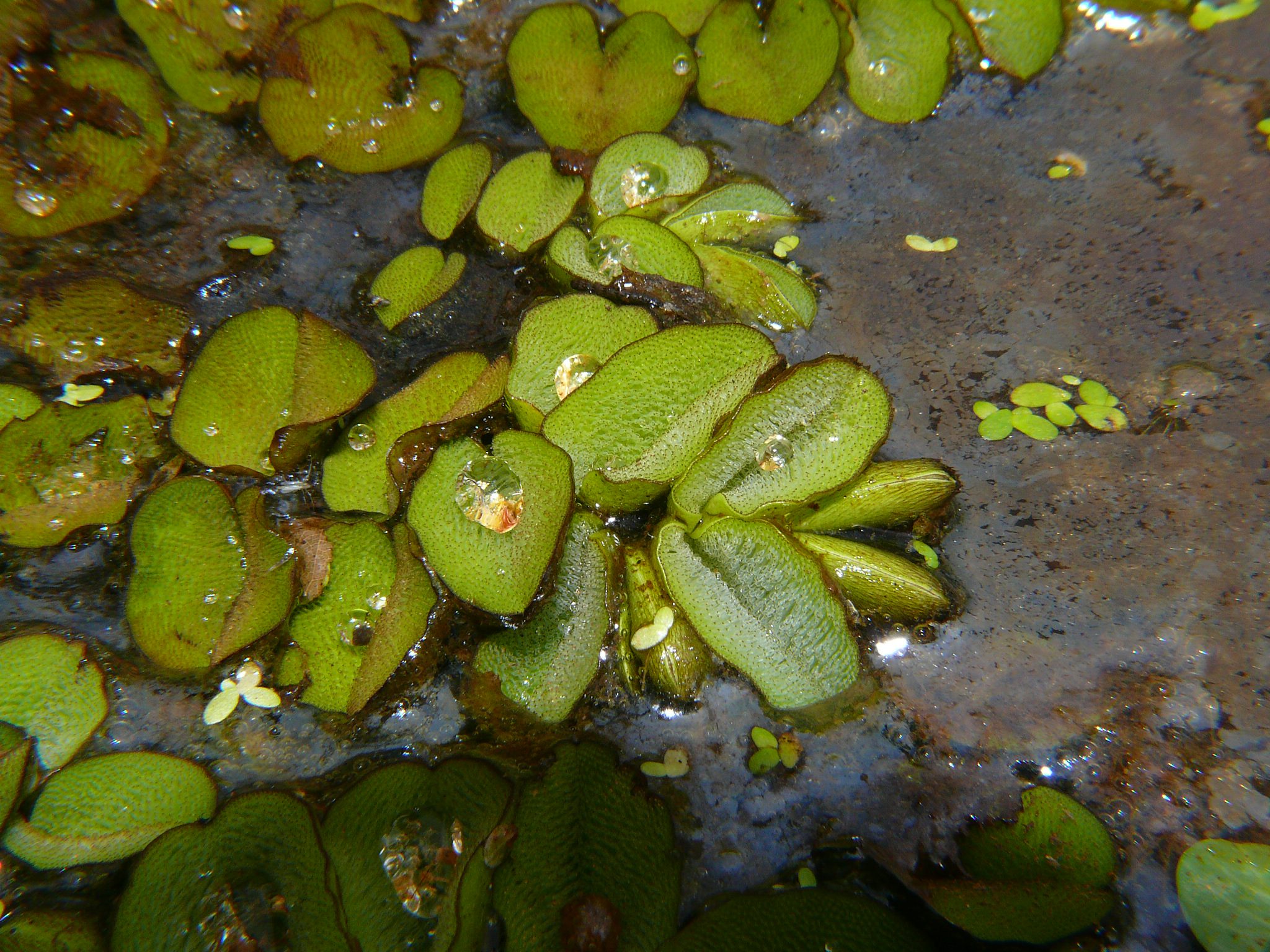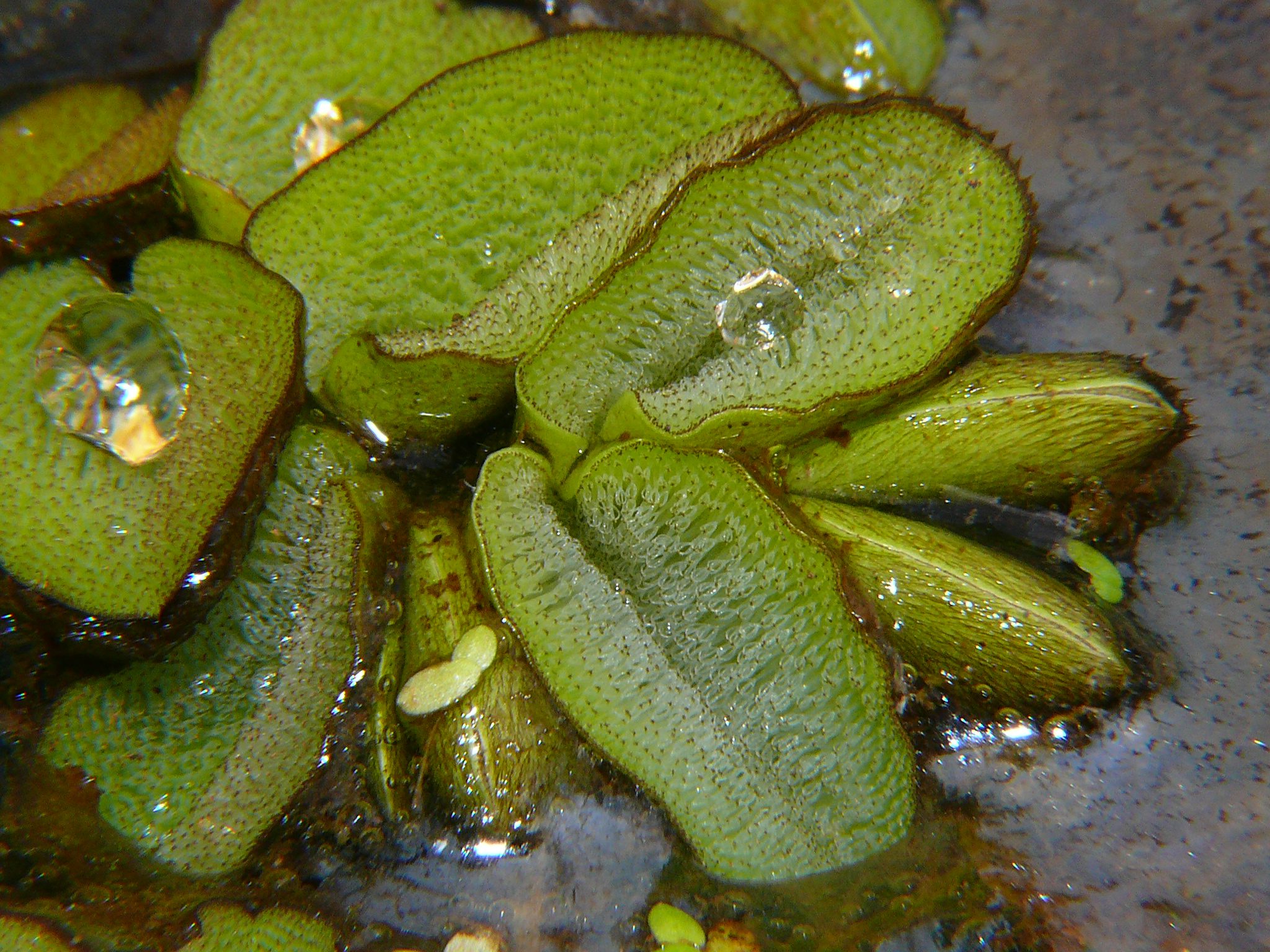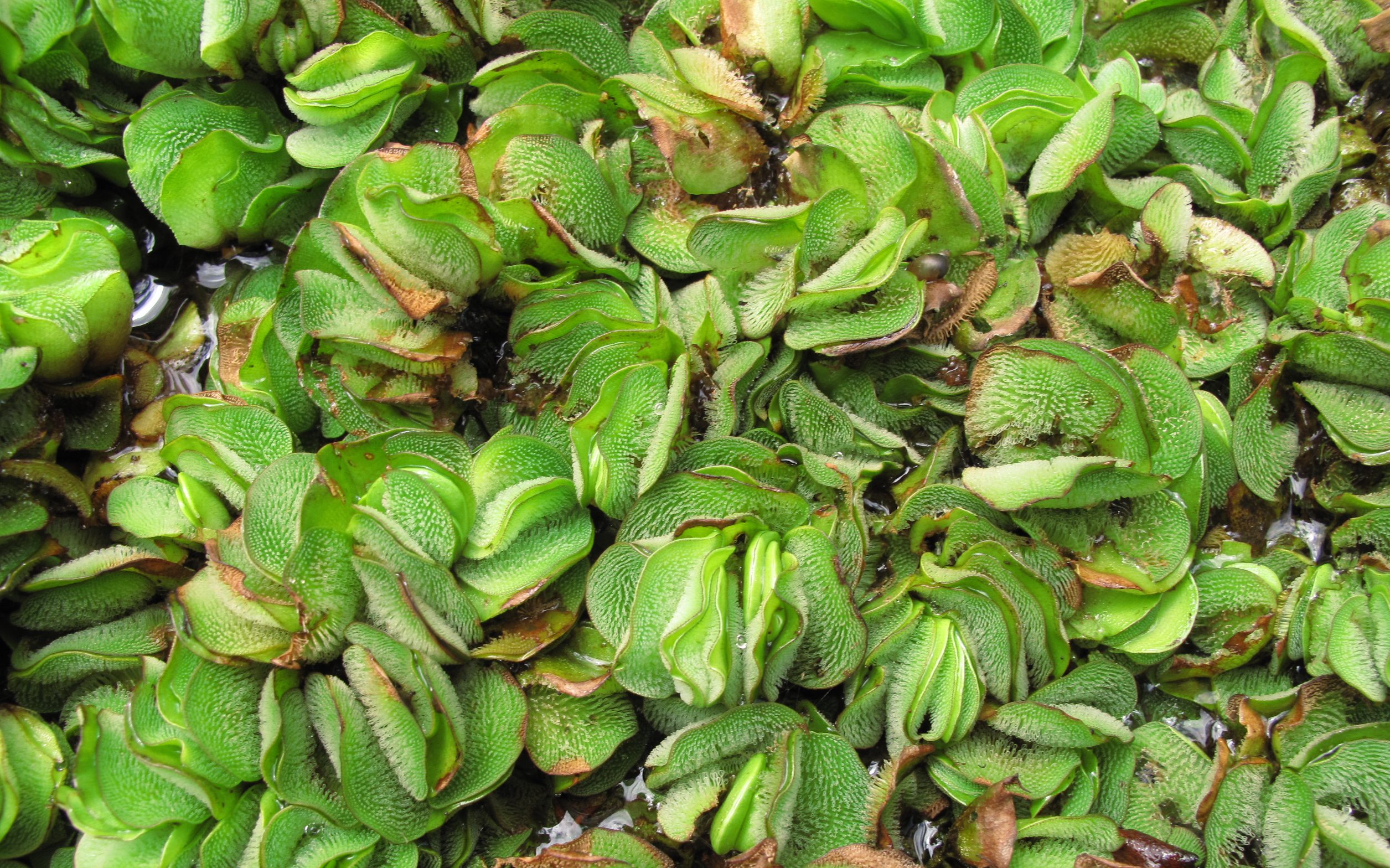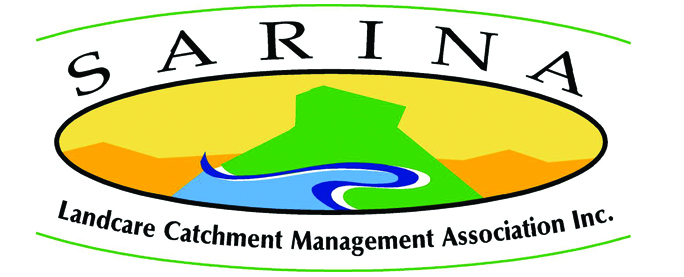Salvinia
Salvinia molesta, Fam. Salviniaceae




Free-floating mat forming aquatic fern that doesn’t look like a typical fern.
| Weed Category: |
Restricted invasive plants Category 3 Plants declared invasive under the Biosecurity Act 2014, that are present in QLD.
Not to be distributed or disposed of.
 Thirty-two WONS (Weeds of National Significance) have been identified because of their impact on primary production and the environment, potential for spread and socioeconomic impacts.
|
| Weed: | Yes |
| Form or habit: | Aquatic plants |
| Family: | Salviniaceae |
| Leaf: | Simple Whorled Simple, in overlapping whorls of three - two light-green and floating; one submerged brownish: finely divided and root-like. Floating leaves are thick and spongy, upper surface covered in long stiff curved water-repellent hairs. Immature leaves almost flat, oval and about 12mm across; mature leaves compacted, folded at the midrib and about 35mm long. |
| Flower conspicuous: | |
| Flower colour: | |
| Flower description: | As a fern it does not produce flowers |
| Fruit conspicuous: | |
| Fruit colour: | |
| Fruit: | |
| Fruit description: | As a fern is does not produce seed |
| Habitat: | |
| Distribution | |
| Food source for: | |
| Toxicity: | |
| Origin: | South America |
| Notes: | Spread by: fragments spread by flood water, animals, boats; discarded aquarium and pond material. Invades/threats: slow-moving streams or still water bodies with high nutrient levels and water temperatures of 20° to 30°C. In optimal conditions can double in volume/surface area every two-three days completely covering water surface. Collects debris during flooding, degrades water quality and destroys wildlife habitats. Notes: prolific and rapid vegetative reproduction from stem fragments is the main means of proliferation (sexual reproduction is from spores produced in tiny specialised structures, sporocarps, borne in long rows on the submerged leaves). Many infestations can be traced to discarded aquarium contents. Common in many local water bodies; control projects being undertaken include biological control. Thick mats prevent access by stock, reduce water flow to irrigation equipment, create a haven for mosquitoes, endanger livestock and children, interfere with recreational activities, and spoil the natural beauty of open water. Category 3 restricted invasive plant under the Biosecurity Act 2014, it must not be given away, sold, or released into the environment without a permit. The Act requires everyone to take all reasonable and practical steps to minimise the risks associated with invasive plants and animals under their control. This is called a general biosecurity obligation (GBO). |
| Information sources: | Mackay Regional Pest Management Group (2018) Weeds of the Mackay Whitsunday Region Second Edition. |



